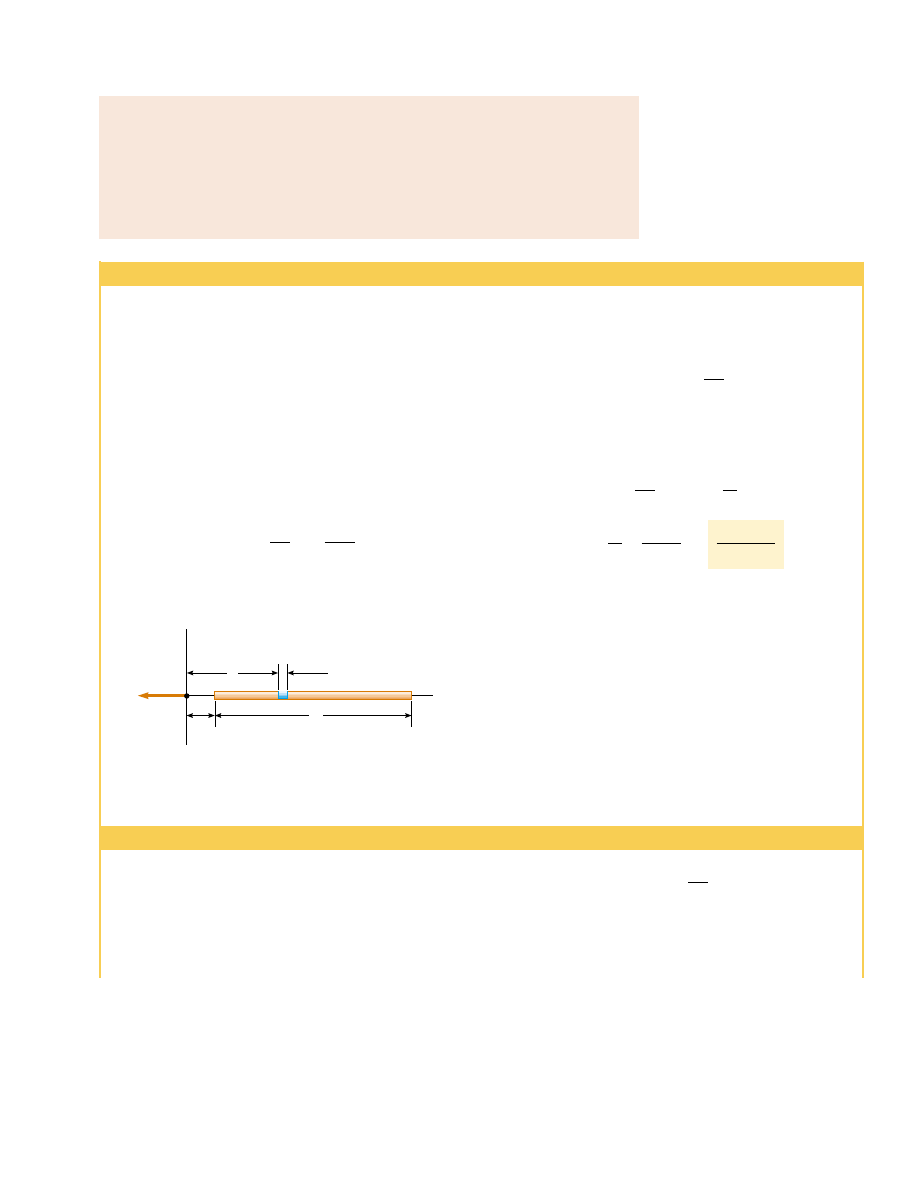Physics For Scientists And Engineers 6E - part 181

S E C T I O N 2 3 . 5 • Electric Field of a Continuous Charge Distribution
721
total electric field at some point must be replaced by vector integrals. Divide
the charge distribution into infinitesimal pieces, and calculate the vector sum
by integrating over the entire charge distribution. Examples 23.7 through 23.9
demonstrate this technique.
•
Symmetry: with both distributions of point charges and continuous charge dis-
tributions, take advantage of any symmetry in the system to simplify your
calculations.
Example 23.7 The Electric Field Due to a Charged Rod
is particularly simple in this case. The total field at P due to all
segments of the rod, which are at different distances from P,
is given by Equation 23.11, which in this case becomes
3
where the limits on the integral extend from one end of the
rod (x ! a) to the other (x ! ! # a). The constants k
e
and 3
can be removed from the integral to yield
where we have used the fact that the total charge Q ! 3!.
What If?
Suppose we move to a point P very far away from
the rod. What is the nature of the electric field at such a point?
Answer If P is far from the rod (a -- !), then ! in the
denominator of the final expression for E can be neglected,
and E
" k
e
Q /a
2
. This is just the form you would expect
for a point charge. Therefore, at large values of a/!, the
charge distribution appears to be a point charge of magni-
tude Q —we are so far away from the rod that we cannot dis-
tinguish that it has a size. The use of the limiting technique
(
) often is a good method for checking a mathe-
matical expression.
a/! : 4
k
e
Q
a(! # a)
!
k
e
3
&
1
a
"
1
! #
a
'
!
E ! k
e
3
%
!#
a
a
dx
x
2
! k
e
3
(
"
1
x
)
a
!#
a
E !
%
!#
a
a
k
e
3
dx
x
2
A rod of length ! has a uniform positive charge per unit
length 3 and a total charge Q. Calculate the electric field at
a point P that is located along the long axis of the rod and a
distance a from one end (Fig. 23.17).
Solution Let us assume that the rod is lying along the
x axis, that dx is the length of one small segment, and that
dq is the charge on that segment. Because the rod has a
charge per unit length 3, the charge dq on the small
segment is dq ! 3 dx.
The field d
E at P due to this segment is in the negative
x direction (because the source of the field carries a positive
charge), and its magnitude is
Because every other element also produces a field in the neg-
ative x direction, the problem of summing their contributions
dE ! k
e
dq
x
2
!
k
e
3
dx
x
2
3
It is important that you understand how to carry out integrations such as this. First, express the
charge element dq in terms of the other variables in the integral. (In this example, there is one vari-
able, x, and so we made the change dq ! 3 dx.) The integral must be over scalar quantities; therefore,
you must express the electric field in terms of components, if necessary. (In this example the field has
only an x component, so we do not bother with this detail.) Then, reduce your expression to an inte-
gral over a single variable (or to multiple integrals, each over a single variable). In examples that have
spherical or cylindrical symmetry, the single variable will be a radial coordinate.
x
y
!
a
P
x
dx
dq =
dx
E
3
Figure 23.17 (Example 23.7) The electric field at P due to a
uniformly charged rod lying along the x axis. The magnitude of
the field at P due to the segment of charge dq is k
e
dq/x
2
. The
total field at P is the vector sum over all segments of the rod.
This field has an x component dE
x
!
dE cos + along the x
axis and a component dE
⊥
perpendicular to the x axis. As
we see in Figure 23.18b, however, the resultant field at P
must lie along the x axis because the perpendicular com-
d
E ! k
e
dq
r
2
A ring of radius a carries a uniformly distributed positive
total charge Q. Calculate the electric field due to the ring at
a point P lying a distance x from its center along the central
axis perpendicular to the plane of the ring (Fig. 23.18a).
Solution The magnitude of the electric field at P due to
the segment of charge dq is
Example 23.8 The Electric Field of a Uniform Ring of Charge